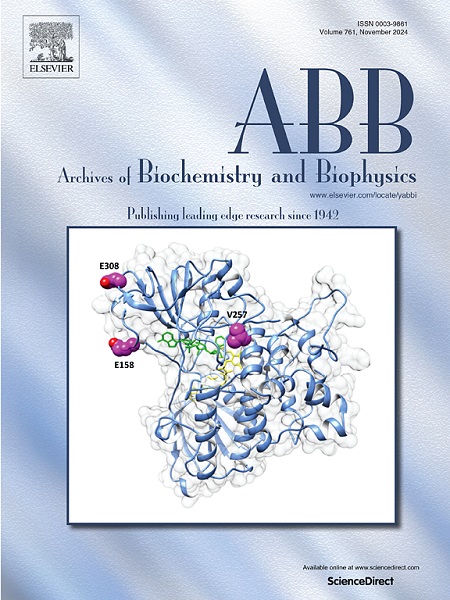Isoliquiritigenin suppresses fatty acid synthesis and cancer cell migration in anaplastic thyroid carcinoma through AMPK/SREBF1 pathway
IF 3.8
3区 生物学
Q2 BIOCHEMISTRY & MOLECULAR BIOLOGY
引用次数: 0
Abstract
Anaplastic thyroid carcinoma (ATC) is a highly aggressive neoplasm with poor prognosis and limited therapeutic alternatives. Isoliquiritigenin (ISL), a bioactive isoflavonoid, has exhibited an antitumor activity across multiple tumor types; however, its precise anticancer mechanisms against ATC remain unexplored. In this study, the therapeutic effects of ISL on ATC cells and the potential mechanism were investigated by RNA-seq analysis and untargeted lipidomic analysis, combined with in vitro and in vivo experimental validation. The results showed that ISL effectively hindered the proliferation of ATC cells, inhibited cancer cell migration by up-regulating the level of E-cadherin and down-regulating the level of N-cadherin, and inhibited fatty acid synthesis by down-regulating the level of Sterol regulatory element binding transcription factor 1 (SREBF1) and its downstream lipid synthesis-related enzyme expression level. The underlying mechanism appears to involve a decrease in intracellular ATP levels induced by ISL and the activation of phosphorylated AMPK, thereby downregulating the expression of SREBF1, ultimately inhibiting cell proliferation, migration, and lipid synthesis. In vivo experiments further confirmed that ISL significantly retarded the growth of tumor xenografts in mice, diminished tumor cell proliferation, and reduced SREBF1 protein levels. This study suggests that ISL modulates lipogenesis and impedes cancer cell migration in ATC through the AMPK/SREBF1 signaling pathway.

求助全文
约1分钟内获得全文
求助全文
来源期刊

Archives of biochemistry and biophysics
生物-生化与分子生物学
CiteScore
7.40
自引率
0.00%
发文量
245
审稿时长
26 days
期刊介绍:
Archives of Biochemistry and Biophysics publishes quality original articles and reviews in the developing areas of biochemistry and biophysics.
Research Areas Include:
• Enzyme and protein structure, function, regulation. Folding, turnover, and post-translational processing
• Biological oxidations, free radical reactions, redox signaling, oxygenases, P450 reactions
• Signal transduction, receptors, membrane transport, intracellular signals. Cellular and integrated metabolism.
 求助内容:
求助内容: 应助结果提醒方式:
应助结果提醒方式:


